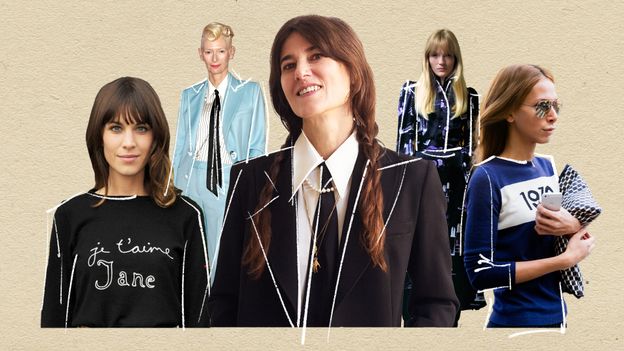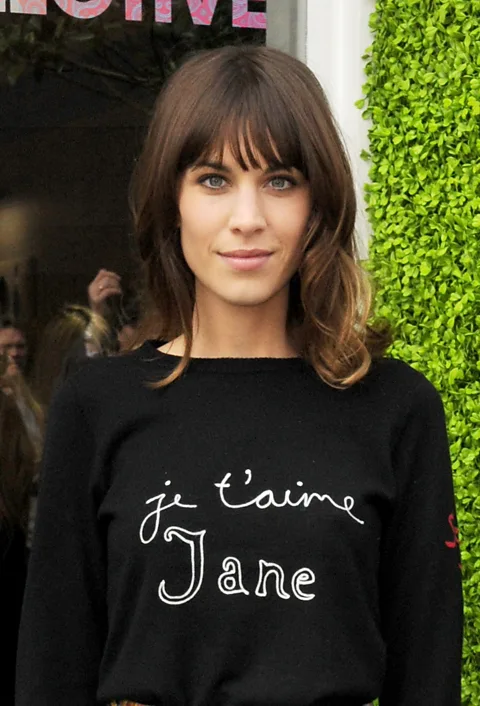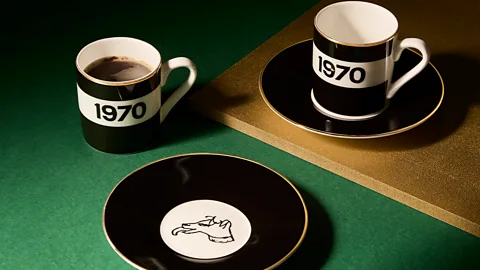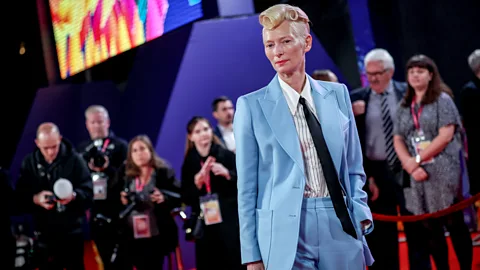Fashion
‘Fashion has power’: Bella Freud on ‘frock consciousness’ and her new podcast

 Serenity Strull/ BBC/ Bella Freud/ Getty Images
Serenity Strull/ BBC/ Bella Freud/ Getty ImagesWith her intimate new podcast, Fashion Neurosis, British designer Bella Freud is exploring what we wear and why. She talks style, ’emotional health’ – and her famous family.
When we’re asleep, being unexpectedly naked in public is a typical bad dream. When we’re awake, it’s the opposite: wearing terrible clothes can feel like a living nightmare. “The wrong outfit can make you feel like something is wrong with you,” says Bella Freud, the British fashion designer, from her studio in West London. “Don’t you want to know why that is? And how to fix it? I do. I’m obsessed.”
Freud aims to unravel the link between fashion and mental health with her new video podcast, Fashion Neurosis, which launches this month with guests like Kate Moss and Courteney Cox. Freud calls it a “fashion chat show” where her famous friends stretch out on a couch – therapy style – while she analyses their behavioural patterns, their deeply lodged fears, and their favourite pairs of jeans. “I’m really interested in getting to the bottom of how our emotional health is reflected in our clothes,” she says. “There’s more to a dress than just a dress.”
 Getty Images
Getty ImagesIf Bella Freud’s quip about a dress sounds like Sigmund Freud‘s famous inquiry into a slip, there’s a tidy reason: the 63-year-old designer is the great-granddaughter of the inventor of psychoanalysis. She’s also the daughter of artist Lucian Freud, the sister of novelist Esther Freud, and the cousin of broadcaster Emma Freud.
“I’ve got to acknowledge all that,” says Freud with the easy bluntness of a doctor saying you’ve got a cold and need more vitamins. “Then I’ve got to get it out of the way. If I start going on about a relative who did very good work, I’ve got a very small window of time – seconds, really – before there’s nothing else to talk about.”
Big Dress Energy
“Fashion Neurosis is a very facetious take on what my great-grandfather did with psychoanalysis,” she says. But it’s meant to be a gentle send-up of therapy, she adds, as well as a way to introduce into the fashion community kind and measured discussions about mental health – no judgements or TikTok proclamations about “narcissists” and “empaths” allowed. (“I hate that stuff. It’s so two-dimensional.”)
 Getty Images
Getty ImagesInstead, Freud hopes to lean into what Virginia Woolf called “frock consciousness”, and what the fashion psychologist Shakaila Forbes Bell now dubs “Big Dress Energy” – the idea that an item of clothing can be used to reveal, or even heal, a piece of our inner selves. “An outfit that makes you feel powerful can really help make your mind more agile, and your body more relaxed,” Freud says. “That’s quite an important thing to pay attention to.”
Freud’s own style revelation began with a boy’s button-down shirt she bought from a jumble sale at the age of 10. The sleeves were too big so she hacked them off with kitchen scissors. “I felt pretty powerless sometimes as a kid,” Freud explains. (Her bohemian, and sometimes wayward, childhood – spent partly in Morocco – was referenced heavily in the 2004 Kate Winslet film Hideous Kinky, which is based on the novel by her sister Esther.) “But I put on this boy’s shirt, and I stared at myself in the mirror. Suddenly I felt agile and powerful. It was a real moment for me.”
After returning to London, the teenaged Freud chopped off her waist-length hair, and snuck out to a dive bar. “I saw Vivienne Westwood there, and freaked out,” she says, laughing. “I was so, so scared but I marched up to her and asked, ‘Is there any possibility I could come and work for you? Just a Saturday job?'” Westwood’s answer? “Oh, I like your hair.” Freud got a weekend gig at the designer’s now-famous Seditionaries shop in the King’s Road, Chelsea. She also got a crash course in how the designer’s famous black bondage pants, woollen plaid kilts and spiked leather collars could make her look older and more fearsome. “People regarded me with some real authority for the first time,” she recalls. “I was like, ‘Oh. Okay. Fashion has power. I can have power.'”
 Bella Freud
Bella FreudIn her 20s, Freud was promoted to Westwood’s studio assistant. She launched her own collection in 1990; by 1994, Women’s Wear Daily had named her a breakout talent of London Fashion Week, thanks to her plaid miniskirt suits, which riffed on Westwood’s signature Anglomania vibes but embraced teeny hemlines and vibrant colours. In 2006, Freud took the wheel at the beloved rock ‘n’ roller label Biba before returning full-time to her own brand. Her first viral hit: a series of sweaters with the date 1970 across the front (“The decade I became alert to the world,” she says) worn by many celebrities, Olivia Wilde and Yara Shahidi among them.
The designer says that while her “always be curious” philosophy was cultivated by Westwood, her work ethic comes from her father. “I didn’t grow up with him. But when I saw him, he was completely focused on his work all the time. And I saw that if you want to get anywhere, that’s where the singular focus needs to be.”
THE CHANGING ROOM
The Changing Room is a column from the BBC that spotlights the fashion and style innovators on the frontlines of a progressive evolution.
Fashion Neurosis is not exactly Freud’s singular focus. She’s still helming a brand that makes truly beautiful clothes, and is diversifying her offering with home goods, such as dishware and vases which bear her handwriting, and art prints of past graphic designs, including the best-selling “Ginsberg is God” lithograph based on her famous Alexa Chung-approved graphic top. Freud is also adding to her luxury clothing collection with more affordable graphic tees and socks, which might bring in an entry-level customer.
Still, the podcast could be a big deal, according to early numbers. The show is just a week old – its premiere stars renegade designer Rick Owens – and it’s already Apple’s number one fashion and beauty podcast in the UK. On Spotify’s more crowded arts and culture charts, it sits at number eight. In the US, it’s broken into the top 25 in both categories. But there is growing audio competition in the style space – podcasts like Articles of Interest, an academic unravelling of popular fashion trends by Avery Trufelman, and Fashion People, a pleasantly chatty industry rundown by Puck’s Lauren Sherman. Freud isn’t fazed – in fact, more voices means more community. “In fashion, there’s everything to be gained by listening to each other.”
 Getty Images
Getty ImagesVeteran designer that she is, Freud admits sometimes she “listens through clothing” instead of words, especially when she’s commuting to work on a packed London train. “I’m on the Tube every day, really,” she says. “I always try to let my eyes do the listening. What are people wearing? What do they want to say to each other? Every once in a while, I’ll see someone in something I designed, especially one of the embroidered sweaters that say things on them.”
“I mean, I nod. They nod. Do they know it’s me? Do we have to even talk? No. The clothes do the talking. They bring what’s inside, outside.”











